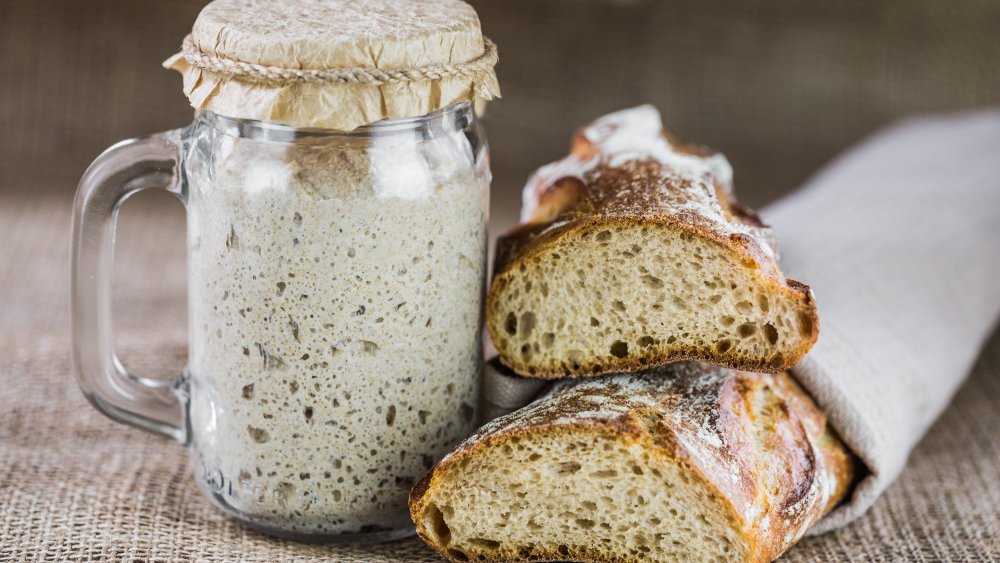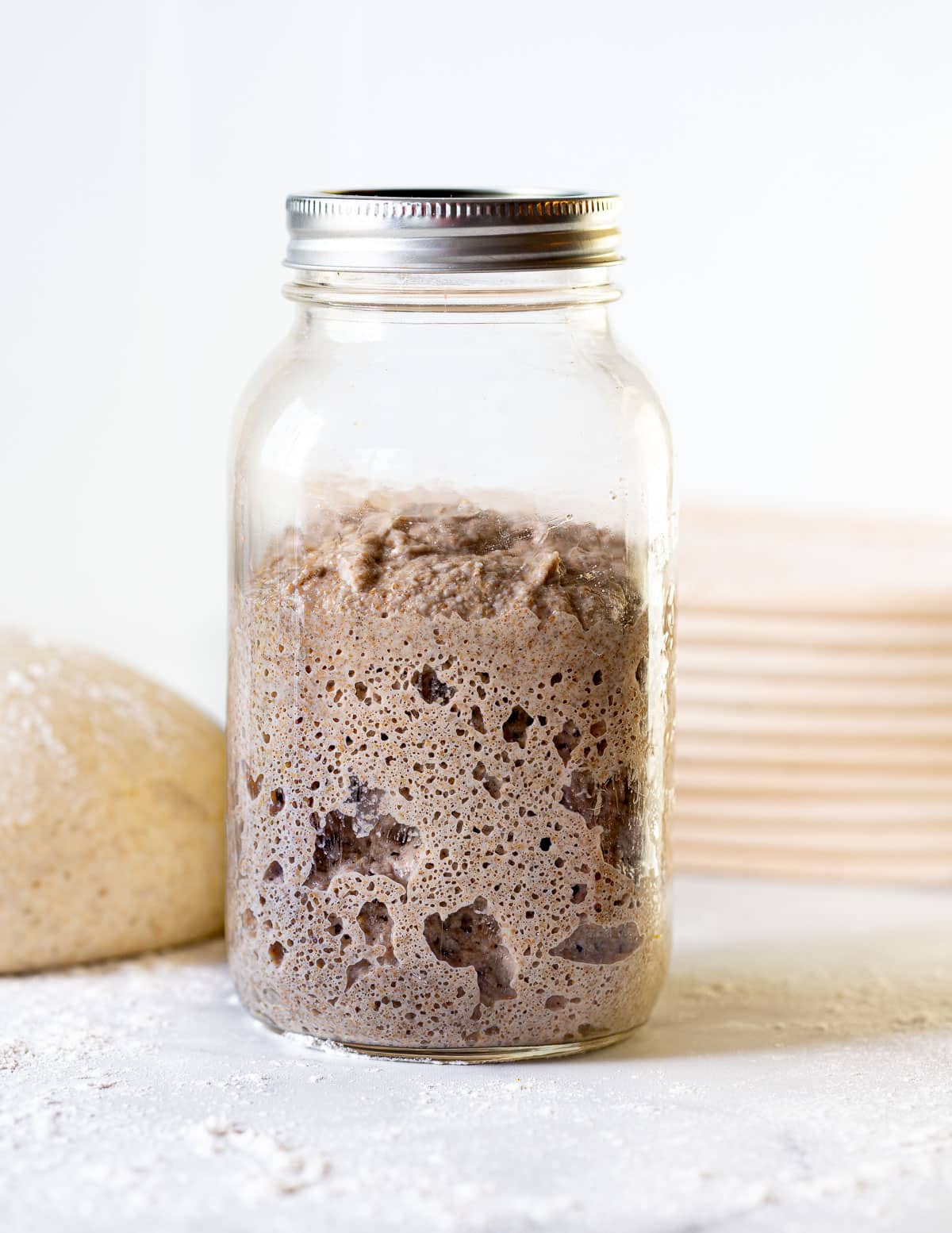
Bulk fermentation should be done at room temperature - so you leave your dough on the counter for this part of the process. The yeast in your sourdough starter feed on the food that youve given them the flour and water and produce C02 gas which is what rises your bread.

Thats your cue and I recommend you wait until that stage before actually baking with it.
How long should sourdough starter ferment. After a week to ten days you should notice a behavioral pattern in your sourdough - raising and deflating in a similar time for a given feeding ratio and ambient temperature - which indicates a certain stability of the culture. Thats your cue and I recommend you wait until that stage before actually baking with it. So far in our series on sourdough bread weve discussed the science of sourdough explained how to get a starter up and running compared starters made from different flours and offered a solid recipe for baking a sourdough loafBut if you want to master this craft it helps to understand two foundational concepts in more detail.
Proper fermentation and proper dough handling. The Tartine bulk rise calls for a 20 inoculation at 78-82 degF for 3-4 hours. This is for their 90 white flour bread and white flour ferments slower than whole wheat so that might explain why they occasionally need more time than the graph would predict.
This graph seems to work for production of your leaven but more on that later. Sourdough is quite different from Commercial Yeast. SD ferments much slower.
Your dough was under fermented. To determine the amount of levaining the Percentage of Pre-fermented Flour PPF is calculated. To be completely accurate the amount of flour in the levain should be considered.
1000 500 250 250 75 in the levain 1075. When creating a starter from scratch you might see a spur of activity at the beginning of the process but you want consistent signs of fermentation day after day before its strong enough to use for leavening. Typically when creating a new starter this is after 5-8 days.
Its easy to make a sourdough starter. You simply mix water and flour place it in a warm place and feed it now and then. After 2-3 days the bubbling will start without much effort.
Bubbling makes it easy to ferment the dough you use to make bread. Put 25g of your starter a tablespoon into a jug or sterile jar. Add to this 100g of water generally I use warmer water at 35C to encourage the sweeter homofermentative LAB in our white starter stir well and then stir in 100g of white roller milled flour strong white bread flour.
If you choose to use stoneground it will ferment. The yeast in your sourdough starter feed on the food that youve given them the flour and water and produce C02 gas which is what rises your bread. Bulk fermentation should be done at room temperature - so you leave your dough on the counter for this part of the process.
Ideally sourdough ferments best between 24C - 28C 75F-82F. How long does it take for a new sourdough starter. If you are making a new starter and you dont see bubbles after a few days it doesnt mean to say that nothing is going to happen.
A starter can be ready in as soon as 5 days. But bakers often have better results after three weeks to a month or regular feedings. Sourdough at the end of bulk fermentation ready to be divided.
For a typical sourdough bread recipe I let bulk fermentation play out at room temperature over 3 to 5 hours. But this time period is ultimately dictated by the bread youre making what the recorded desired dough temperature is and the temperature at which you keep the dough. Rye helps to alleviate some of these issues as its a bit more forgiving with its feeding times.
Managing Sourdough Starter Fermentation The entire 2 weeks leading up to this bake I carefully fed my starter 3 times a day with 50 rye and 50 unbleached all-purpose. Not many other recipes youll see call for much more than 25 of final dough being mature culture. This method takes 3 days from feeding starter but as long as you know when you are going to bake its not a problem.
As I say Im new to so Id love to hear your experiences. Nice to hear from a british baker. The sourdough has more time to work on the bran of the grain breaking it down to make it more digestible and neutralizing phytic acid.
Sourdough starter imparts a depth of flavor that cannot be found with just a small addition of sourdough to a bread that uses baking soda for leavening. Making and maintaining the starter. This takes 5-7 days initially and with care can last for a long time.
Creating the sourdough sponge with starter. This hydrates the flour which encourages enzymes to begin gluten development. Dough can be left to autolyse from 10 minutes to 5 hours or more.
But as with many aspects of bread baking autolysis can be done in different ways and can give different results. How long until my sourdough is ready to bake with. If youre starting from scratch generally about a week and sometimes several days longer.
If you are gifted with a portion of someone elses. As a very basic time frame the very minimum that sourdough should fermentproof for is 4 hours. Less than 4 hours simply wont be enough time to develop enough of a gluten structure or flavor.
But depending on other variables such as. How much sourdough starter or leaven has been used in the dough.